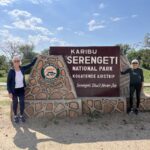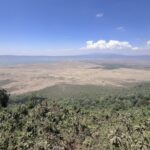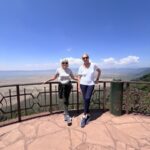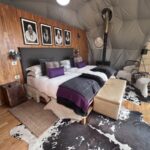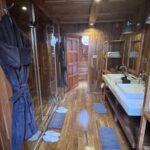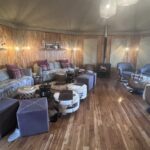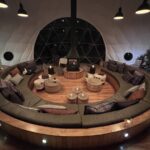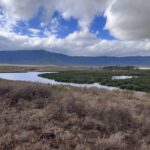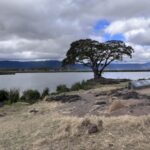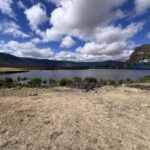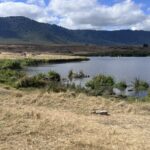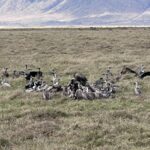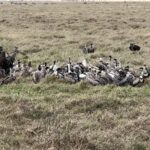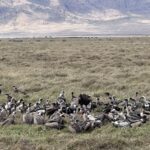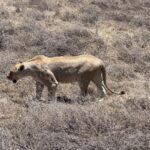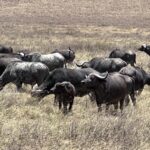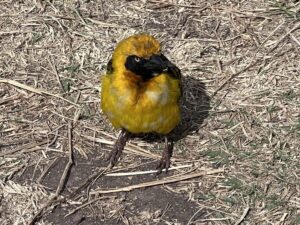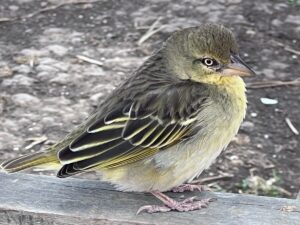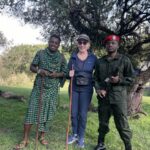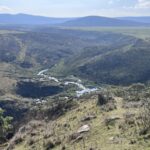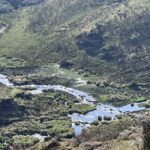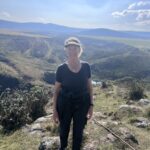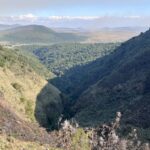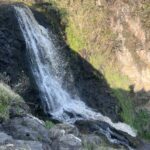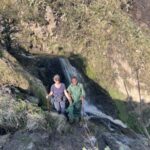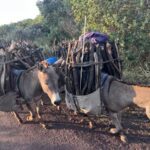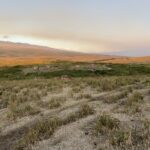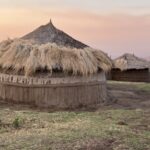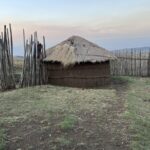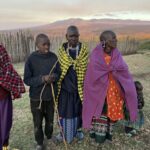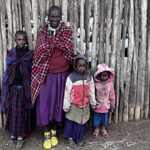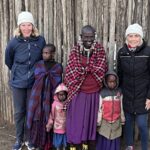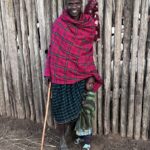From Kogatende airstrip to Lake Manyara airstrip! Just dirt tracks as runways. We were met at Lake Manyara by our first female guide Zuwaddy, to be taken to our new home, the Highlands.
The Highlands camp is located at the highest elevation in the region on the slopes of the Olmoti Crater and has sensational and sweeping views of the surrounding landscapes with mountainous forests, grassy plains, and swampy marshlands. On game drives in the Ngorongoro Crater, you can spot buffalo, zebra, hartebeest, bushbuck, leopard, lion, elephant, and hyena.
The Highlands has eight uniquely constructed domed suites. They are made of canvas and perspex and are all surrounded by lush forest vegetation and views of the rolling hills and distant volcanic mountains. As this camp is at a high altitude, it was very cold in the mornings and evenings and so we had a wood stove in our tent which was fully lit when we came to bed. Plus we had our bush babies (hot water bottles) in bed too so it was very snuggly in the tent. At all the camps you have to be escorted to and from your tent after dark as most of the camps are open and animals can come and go as they please!!
The Ngorongoro Conservation Area (809,440 ha) spans vast expanses of highland plains, savanna, savanna woodlands and forests, from the plains of the Serengeti National Park in the north-west, to the eastern arm of the Great Rift Valley. The area was established in 1959 as a multiple land use area, with wildlife coexisting with semi-nomadic Maasai pastoralists practising traditional livestock grazing. It includes the spectacular Ngorongoro Crater, the world’s largest caldera, and Olduvai Gorge, a 14km long deep ravine. The property has global importance for biodiversity conservation in view of the presence of globally threatened species such as the black Rhino, the density of wildlife inhabiting the Ngorongoro Crater and surrounding areas throughout the year, and the annual migration of wildebeest, zebra, Thompson’s and Grant’s gazelles and other ungulates into the northern plains.
On our game drive we encountered a lioness stalking a warthog but the warthog escaped to live another day. A gazelle had been caught by a hyena which was eating it when we arrived. Thirty vultures then arrived waiting for the leftovers that the hyena did not want and once the hyena departed they swooped down and within 5 minutes there was just bones left. It was incredible!
The bird life is also amazing in Africa. Such vivid colours.
In the afternoon I decided to go on the Olmoti Crater hike. This gave me the chance to see flora and fauna up close and to enjoy the beautiful Highlands area of the Ngorongoro Crater Conservation Area
The gentle ascent took me through mountain forest, grassland and rocky outcrops – and made an excellent break from sitting in a safari vehicle.
The walk was led by an experienced Maasai guide from our camp, Lembris, accompanied by an armed park ranger as both buffalo and big cats are found in the area. As we walked, we enjoyed mountain views and hear the faint chimes of cowbells – long before we spotted the cattle that are brought here by Maasai herders to graze on the lush grass. At the summit, we had a stunning view of the Olmoti Crater and the seasonal Munge waterfall.
And to end the day we had a cultural visit to a Masai village. There were four huts each occupied by one of the four wives of the tribal leader. The children of each wife live with their mother while the leader decides which hut he will spend the night in! That wouldn’t go down well in our society. They lead very simple lives. They have no gas, electricity or bathroom facilities. The men and boys spend most of the days herding and protecting the cattle. When we were at the village, we went inside one hut and there was a wood fire in the middle of the room with a pot of rice on it.We gave out crayons and stickers which the children marvelled at. A real eye opener.

